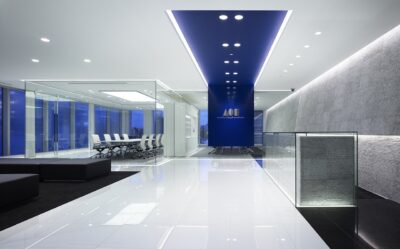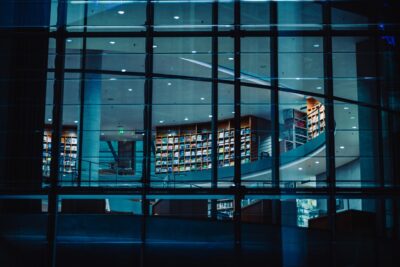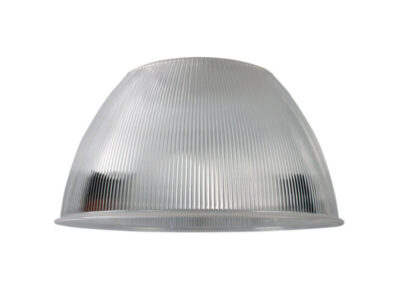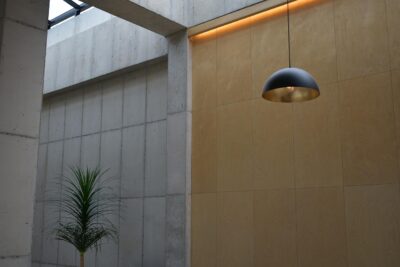
How to Use LED Fixture Covers for Green Building Compliance
How to Use LED Fixture Covers for Green Building Compliance By Aman | Updated on May 14th 2025 Green buildings are no longer a trend—they’re
Home » How to Use LED Fixture Covers for Green Building Compliance
Green buildings are no longer a trend—they’re the future of responsible design. And when we talk about green building practices, most folks jump straight to solar panels or HVAC upgrades. But lighting? That’s a silent hero in this space. Surprisingly, even something as simple as a fixture cover can tip the scales toward sustainable success.
LED fixture covers might not sound flashy, but they carry more weight in eco-compliance than most people realize. They help reduce energy consumption, enhance indoor comfort, and even stretch the lifespan of fixtures. Plus, they’re often overlooked in sustainable retrofits—and that’s a missed opportunity.
This article is about fixing that gap. Let’s explore how a thoughtful lighting strategy, with the right LED fixture covers in place, can help any space align with green building goals—without compromising functionality or aesthetics.

Green building lighting is exactly what it sounds like—lighting systems that support environmental goals. That includes energy efficiency, low carbon footprints, and occupant health. It’s not just about swapping out bulbs. It’s a holistic approach: using smart designs, the right technologies, and yes, even the covers that house your lights.
The goal is to create spaces that use less, last longer, and feel better.
Here are a few ways lighting performance is measured in green buildings:
The bottom line? Lighting can either help or hurt a building’s green scorecard. And LED fixture covers play an unexpected but important role in that score.
Think about it. A traditional incandescent bulb turns most of its energy into heat. Fluorescent tubes? Better, but still not great. LEDs changed the game—less heat, more light, and way longer lifespan.
They also have way lower wattage requirements and work smoothly with motion sensors, dimmers, and daylight harvesting systems. Basically, they’re made for modern buildings.
Lighting can help rack up points for major certifications like:
A well-designed LED system—with the right fixture covers—can tick multiple boxes at once.
Fixture covers, or diffusers, are the transparent or translucent layers that cover lighting elements. They serve several purposes:
Sure, they’re practical. But they’re also design tools. A good cover can transform how a room feels.
Without the right cover, even the best LED setup can look uninviting—or worse, noncompliant.
These go over the fixture entirely, giving a soft, uniform look. Think office ceilings, utility rooms, or garages. They’re easy to clean and great at spreading light.
Common in drop ceilings. They create a clean, modern look and are often made from acrylic or polycarbonate. Best for wide, evenly lit areas like classrooms or hallways.
Used in high-moisture or dust-heavy areas—think food service, parking garages, or industrial kitchens. These covers are sealed tight to keep out water and particles.
They’re those grid-style covers you’ve seen in older buildings. But new versions control glare really well while keeping things energy-efficient. Great for labs or commercial kitchens.
Sometimes the original fixture is out of production, or the application needs something unusual—like shaped panels or unusually thick materials for impact resistance. That’s where custom fabrication comes in.
By diffusing light more evenly, covers reduce the need for higher lumen outputs. In real terms: fewer lights or lower wattage bulbs can do the same job—using less power.
A big part of green design isn’t just saving power—it’s making people feel good in the space. Glare, flicker, and harsh shadows can cause headaches or eye strain. A well-designed fixture cover softens those edges and helps create environments where people can focus, relax, or just feel at ease.
Keeping fixtures free from dust, debris, and water damage means fewer replacements—and fewer landfill visits. That’s sustainability in action.
Most green certification systems now include detailed lighting requirements. Fixture covers help check boxes like:
All without completely changing your fixtures or wiring.
Routine cleaning with a soft cloth and mild soap keeps light transmission high. Avoid abrasive chemicals—they cloud the surface and reduce diffusion.
Check for discoloration or brittleness during scheduled inspections. Older covers that yellow or crack need to be replaced—not just for aesthetics but for performance too.
Got a building full of old fluorescent fixtures with brittle covers? Instead of replacing the whole setup, retrofitting with modern LED diffusers and custom-fit covers can deliver major energy savings. That’s where smart solutions like custom fabrication really shine.

LED fixture covers are the unsung heroes in sustainable lighting design. They amplify the impact of efficient LEDs, improve visual quality, and extend fixture lifespans—all while helping meet strict certification requirements.
Whether it’s a flat diffuser in a school hallway or a vapor-tight wrap in a warehouse, the right cover can make a surprising difference. And when retrofitting or designing new spaces, sourcing from experienced fabricators can simplify the process—especially for hard-to-fit or outdated models.
Fluorolite Plastics offers solutions that fit this mold perfectly, helping turn overlooked elements into key players in green compliance. For any lighting strategy focused on longevity, efficiency, and eco-alignment, smart fixture covers aren’t just a detail—they’re essential.
LED fixture covers contribute to better lighting performance by reducing glare, improving efficiency, and enhancing occupant comfort—all of which can support LEED credit requirements in lighting and energy optimization.
Absolutely. Many older buildings don’t need full fixture replacements. A retrofit with LED tubes and custom-fit covers can modernize the look and meet today’s energy standards.
Acrylic is great for indoor use thanks to its diffusion and affordability. Polycarbonate is ideal for industrial settings due to its durability and impact resistance.
Clean covers every few months or as needed, depending on the environment. Replace them if they’re yellowed, cracked, or no longer secure.
Definitely. They determine how evenly light spreads across a space, reduce harsh shadows, and eliminate hot spots—essential for visual comfort and compliance.
Custom covers are crucial when the original fixtures are discontinued or oddly shaped. Fabrication options like molding and vacuum forming can reproduce exact fits while maintaining performance.
Yes, there are specialty manufacturers who offer both replacement covers and custom-fabricated solutions using processes like vacuum forming. One such provider is Fluorolite Plastics, known for supporting green building upgrades with sustainable light covers.
Not necessarily. Only well-designed, high-quality covers that enhance light diffusion and reduce the need for high-output bulbs will genuinely contribute to energy efficiency.

How to Use LED Fixture Covers for Green Building Compliance By Aman | Updated on May 14th 2025 Green buildings are no longer a trend—they’re

How to Extend the Life of Your LED Fixture Light Covers By Aman | Updated on May 3rd 2025 LED fixture light covers might seem

How to Clean LED Fixtures and Light Covers Safely By Aman | Updated on 30th April 2025 Let’s face it—LED lighting fixtures look sleek, save
Trustindex verifies that the original source of the review is Google. It looks really good better than I thought thank you very muchTrustindex verifies that the original source of the review is Google. I have a medicine cabinet in our bathroom that is about 65 years old. The fluorescent light lenses were yellow, brittle, and cracked. My wife lived in this house as a little girl. We are always in the process of remodeling or maintaining this old house of her parents. When she asked about rehabilitating the old med cabinet I thought she was nuts thinking we could find some new lenses. Well she found Fluorolite Plastics LLC. online and I thought what the heck, maybe they can help. I sent pictures, and some measurements online. They replied back asking me to send the original lenses so I did. Well in a few days to my surprise I got a quote for some replacements. I painted the insides, steel wooled the aluminum trim, and bought a new mirror with a 1 inch bevel on the edges. I now have a really nice vintage medicine cabinet in the bathroom. And by the way I'd like to add, a happy wife makes a happy life! Thanks so much Fluorolite!Trustindex verifies that the original source of the review is Google. We had to have eggcrate florescent light shades custom cut to fit our ceiling floresent lights. This company did it to perfection. They were package perfect as well. Thank you.Trustindex verifies that the original source of the review is Google. Muy bueno buen servicio buena calidadTrustindex verifies that the original source of the review is Google. I was trying to replace the fluorescent light coverings in my bathroom and I came across this Fluorolite Plastic LLC company online , which turned out to be a heaven sent experience. The customer service was amazing and not to mention the timely response to the email sent about what I needed . Customer service also took the time out to make sure that I was ordering the right product . My whole experience and the product was superb. Loving the light covering ♥️Trustindex verifies that the original source of the review is Google. The parts are great and the employees even better.Trustindex verifies that the original source of the review is Google. Great quality acrylic circles. Not flimsy like some I’ve tried. Material is protected from scratches and other damage well with plastic/paper coating then securely shipped from Fluorolite in thick cardboard. Encountered a shipping error with my order but in-house Customer Service resolved it quickly. Will definitely use Fluorolite again!Trustindex verifies that the original source of the review is Google. It was a very good experience. Customer service, excellent! The product was made with a thicker plastic. Not a cheap, thin one.Trustindex verifies that the original source of the review is Google. Product fit perfectly. Customer service was extremely helpful in working with my measurements and photo of existing light cover, to insure I purchased the right product.
"We've Got You Covered" and Trace n'Fax are Registered Trademarks of Fluorolite Plastics, LLC. © 2011-2024 All rights reserved Fluorolite Plastics